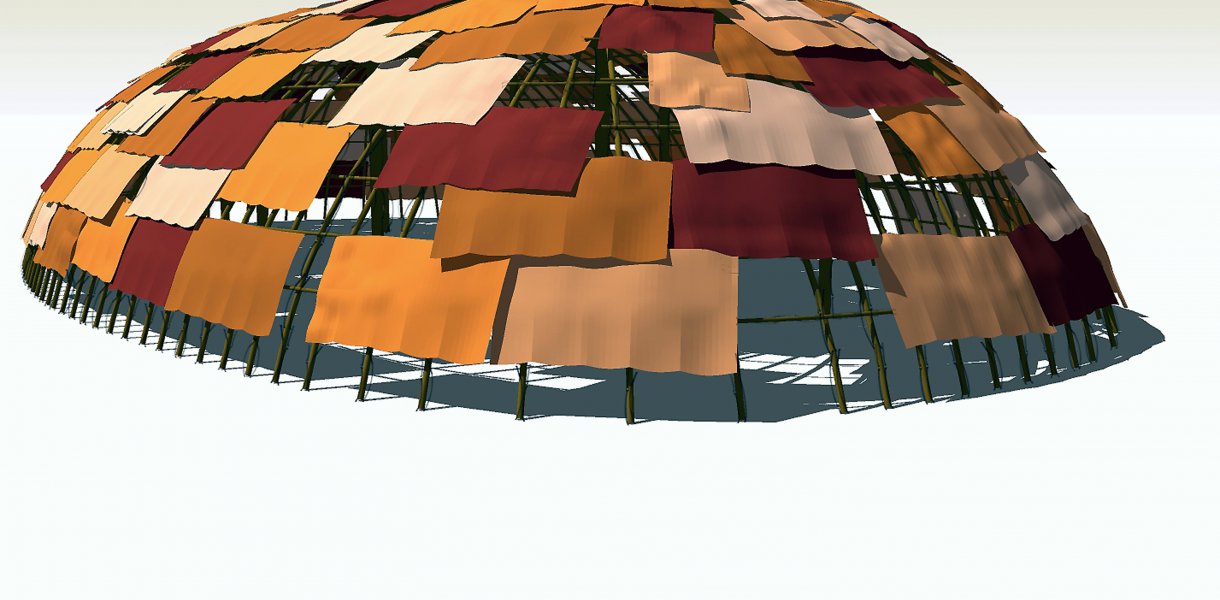Cabana (Shelter)
Portugal
21 Jun 2013 – 5 Oct 2013
Jardim Gulbenkian
Free admission
A primitive shelter made entirely from natural raw materials. It combines a minimal structure of eucalyptus poles with the genuine plastic wealth of natural materials in a pure state. Earthy colours, warm shades and textures inspired upon African ethnic tribes. The materials used were gathered on a journey through different Portuguese landscapes, resulting in a range of colours of the earth (clay), which have impregnated the panels covering the Hut. In this way, emphasis is placed on the vernacular and holistic character of the construction, which, as an expression of craftsmanship, receives the visitor and relates him to the place.

CATARINA PINTO (Portugal, 1979)
A graduate in Architecture, Catarina Pinto founded Terrapalha (2008), an architects’ studio where she engages in slow, cooperative and artisanal construction, making use of the local, abundant and natural materials. Her work can be found in many manifestos, photos and social networks, and in the press. Having travelled constantly since the 1990s, she has had the opportunity to get to know many cultures, to create projects and buildings in various contexts, and to greatly enrich her knowledge. Now much more wide-ranging, her knowledge is as much design-based as it is practical and constructive. She is interested in the integrity of processes: the essential, the artisanal and the sacred; the place, the community, ecology and tradition; and, at the same time, she is pioneering and forward-looking. She makes ephemeral works, land art and pioneering experimental buildings that use bales of hay as their basic building block. She has worked with Gernot Minke in Germany (2010-2011), the artist Nandipha Mntambo, on the play “O Casulo”, in the Gulbenkian Gardens (2011), and with the production team of the Boom Festival (2012). She was the winner of the Crises Buster competition, launched by the Lisbon Architecture Triennial (2013).
